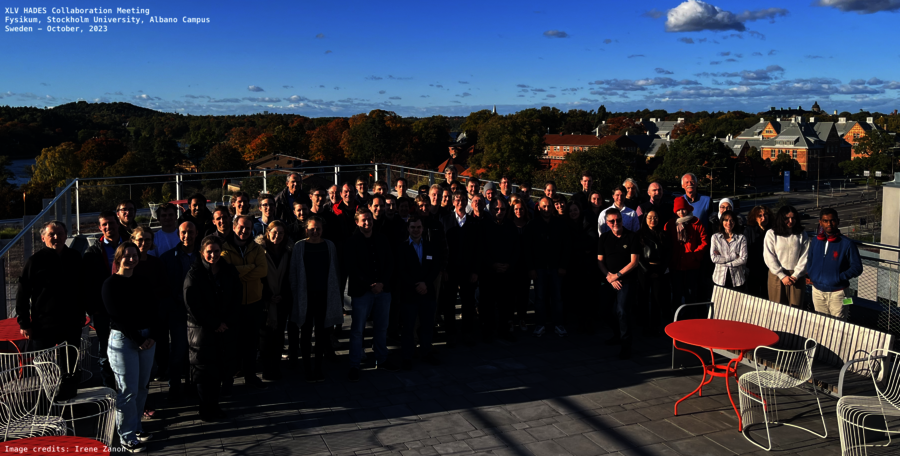Re-election of HADES spokespersons
02.07.2024 |
Professor Joachim Stroth (GSI and Institut für Kernphysik, Goethe-Universität) and Dr. Pavel Tlusty (Nuclear Physics Institute, The Czech Academy of Sciences) have been elected as the HADES Spokesperson and Deputy Spokesperson for the next term of three years. HADES is an international collaboration involving almost 150 scientists from Germany, Czech Republic, Poland, France, Sweden, Portugal, and Cyprus.
The commitment and expertise of Joachim Stroth and Pavel Tlusty have been invaluable to the ongoing success and progress of the HADES project in the last years. The upcoming experiments in their next term will shed new light on the phase diagram of QCD matter, providing deeper insights into the properties and behaviors of strongly interacting particles under extreme conditions.
The HADES detector is a versatile fixed-target collision experiment that operates with ion beams of a few GeV provided by the SIS18 synchrotron, and probes the systems created in such collisions at freeze-out are characterized by the highest baryon chemical potentials and intermediate temperatures. Similar properties of matter are expected to form in merging neutron stars, making low-energy heavy-ion collisions a unique opportunity to study the microscopic and macroscopic properties of such matter. In addition, HADES can operate with proton or secondary pion beams to study the properties of hadronic resonances and provide reference measurements for heavy-ion collisions. Recently, HADES is also set to analyze Au+Au and C+C collisions at kinetic beam energies of 0.8A GeV and below. These measurements will extend the phase diagram of QCD matter to even higher baryon chemical potentials, offering more constraints on the equation of state of dense baryonic matter and potentially leading to the discovery of further phase transitions.
With the leadership and commitment of Joachim Stroth and Pavel Tlusty the HADES collaboration will advance the research objectives further towards FAIR. Over the next years, the construction of the SIS100 accelerator and the CBM experiment will enable the study of heavy-ion collisions in the 2.7 to 4.9 GeV energy range with unprecedented precision. The physics programs of the HADES and CBM experiments will be complementary. (LW)














